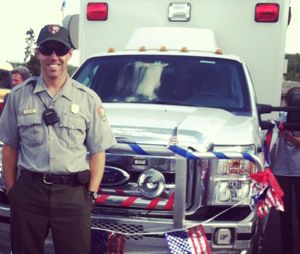The EMS Week 2015 theme is EMS STRONG. From getting ROSC on a child to belting out the “Frozen” theme song on the way to the hospital, we wanted to know how kids have inspired you to be EMS STRONG. See the finalists and winners of our 2015 essay contest, where readers describe how a pediatric response made them feel like a superhero.
https://www.facebook.com/paramedic?v=app_806190236125020&app_data=referer_override%3D
It is one thing to stay calm as an EMT or paramedic on a routine nausea and vomiting call, but it’s quite another when you have a critical pediatric patient on your hands.
I once thought pediatric calls would always fill me with anxiety, but everything changed one day last summer. I responded to a young boy who’d fallen and hit his head and had a small trail of blood coming from his left ear.
“Help him,” cried his father.
“He’s got a skull fracture!” an off-duty doctor shouted.
“Oh my god!” shrieked his mother.
Everyone on scene was hysterical, except for the one person you’d most expect—the patient. The eight-year-old boy with blond hair and blue eyes lay on the grass with a slightly bemused look on his face which seemed to say, “Why all the fuss?”
When I assessed the boy, I found him alert and oriented and denying any major pain. I also noticed him gazing up at me with such calm and composure that I immediately reconnected to those traits within myself and suddenly felt like Luke Skywalker rescuing Han Solo from Jabba the Hutt’s palace.
Still, I moved fast—placing the boy in full spinal precautions and, because we were hours away from a hospital, calling for a medevac helicopter. However, thanks to him, I felt a stillness in all the motion and a calm amidst the chaos, and the call went great.
 |
| Paramedic Kevin Grange at Yellowstone National Park. (Courtesy photo) |
I noticed a similar thing on my next few pediatric calls—the sick kids were often the calmest on-scene and I quickly realized it wasn’t treating children that filled me with anxiety so much as the chaotic nature of the scene surrounding them.
Switching from my usual strategy of engaging the child’s parents early and often, I delegated that task to my partner and, instead, focused all my attention on the child. During my assessments, I made sure to sit on the couch, or kneel on the floor, so I’d always be at the child’s level. I used the names of cartoon characters to help determine their mental status (and draw a laugh) and all the equipment in the ambulance—the pulse oximeter, my stethoscope and EMS gloves blown up like balloons—became tools to engage my patients, bring a lightness into the scene and ease their worry. I discovered that making a connection with my pediatric patients by using creativity and imagination not only improved my assessment and eased my anxiety about running those calls, it was also a heck of a lot of fun.












